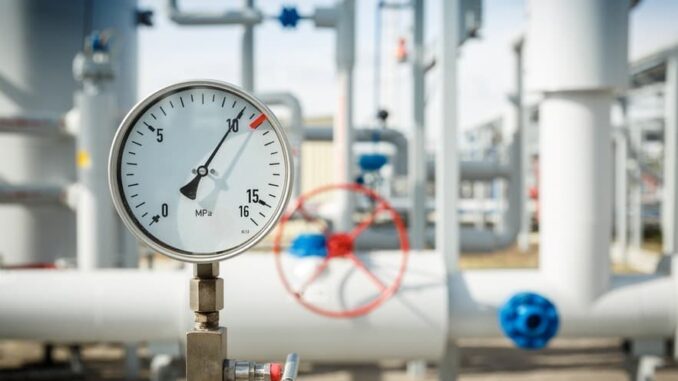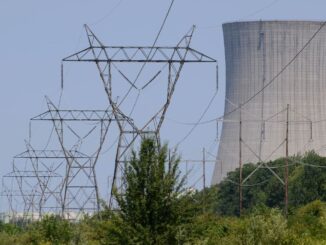
As green hydrogen becomes an ever more important clean energy source, governments and energy companies must prepare for a steep incline in production in the coming years and ensure they have the correct infrastructure to transport it. Some regions of the world are already establishing major hydrogen corridors, such as the Spain – Netherlands link in Europe.
Source: Oil Price
Adapting new natural gas developments to be suitable for hydrogen transportation could save companies money and time in the long term, as well as support the transition away from fossil fuels to renewable alternatives.
This month, the CEO of Italgas, Paolo Gallo, emphasised the importance of constructing gas infrastructure that is capable of transporting hydrogen as a means of meeting decarbonisation goals. Gallo stated, “Today we are moving around natural gas, but tomorrow we will have biomethane [and] clean hydrogen that will be used to decarbonize the system… So, it’s extremely important that the infrastructures are ready to accept different kinds of gases in [a] blending situation.”
Green hydrogen, produced using renewable energy sources rather than fossil fuels to power electrolysis, is being viewed as increasingly important for accelerating the global green transition. Unlike wind or solar power, green hydrogen is a versatile carrier that can be used in a range of ways, such as in fuel for transportation. While most hydrogen is produced using fossil fuels at present, favourable government policies and increased pressure on energy companies to decarbonise are expected to lead to a boom in green hydrogen production over the coming decades.
Gallo is not the first to suggest the repurposing of existing infrastructure, with several energy companies around the globe exploring ways to adapt existing pipelines to make them suitable for transporting hydrogen.
Many European countries are aiming to use existing gas infrastructure to transport hydrogen, with several recent studies and pilot testing phases showing positive results. The use of existing pipelines can reduce hydrogen transport costs but pipelines must be assessed to see whether they’re suitable for hydrogen transportation, taking into account issues such as leakage, leakage detection, effects of hydrogen on pipeline assets and end users, corrosion, maintenance, and metering of gas flow.
The potential use of gas pipelines for transporting hydrogen is becoming an increasingly popular topic as many governments accelerate plans to increase their natural gas production and infrastructure. This is being seen in the U.S., which, controversially, has an LNG project pipeline of 13 facilities along the US Gulf Coast in Louisiana and Texas. Canada is also constructing its first LNG transport facility, after years of pressure from energy companies.
This reflects the global sentiment that natural gas will be critical for achieving the green transition. The EU ruled last year that natural gas will be used as a transition fuel in the mid-term shift to green alternatives as a means of moving away from more polluting fossil fuels, such as oil and coal.
This has driven many energy companies to announce new gas projects for the next decade. This regional production drive was further accelerated by gas shortages in Europe and North America following the Russian invasion of Ukraine and subsequent sanctions on Russian energy last year.
As companies develop new natural gas projects with support from state governments – potentially at odds with national climate policies – they should consider the potential for new pipelines to be used for transporting alternative energies, such as green hydrogen and ammonia, to ensure new infrastructure does not go to waste as the demand for gas eventually wanes.
In the U.S., the Department of Energy’s Hydrogen and Fuel Cell Technologies Office (HFTO) launched the HyBlend initiative in 2021 to address technical barriers to blending hydrogen in natural gas pipelines to support the DoE’s H2@Scale vision for clean hydrogen use across multiple sectors in the economy. The U.S. has around three million miles of natural gas pipelines and more than 1,600 miles of dedicated hydrogen pipelines. The HyBlend team will test gas pipelines across the country to see their suitability for transporting hydrogen in different blends.
This year, Open Grid Europe (OGE) announced that the first long-distance gas pipeline in Germany is being converted for hydrogen use. The 46km pipeline in the northwest of the country will be ready to transport hydrogen from 2025. The project is part of the GET H2 Nukleus project and is being funded by the EU’s Important Project of Common European Interest (IPCEI) initiative. The adaption of the pipeline is expected to help companies in heavy industry and medium-sized businesses connect to the hydrogen supply.
Several new natural gas facilities are being constructed to support mid-term energy security en route to a green transition. At the same time, many companies around the globe have announced plans to develop their green hydrogen production over the coming decade, with demand expected to rise significantly over the next few years. Energy companies and governments must now use this opportunity to develop pipelines that can be used for the transport of both natural gas and green hydrogen to save money and time in the future and better support a green transition.
By Felicity Bradstock for Oilprice.com



